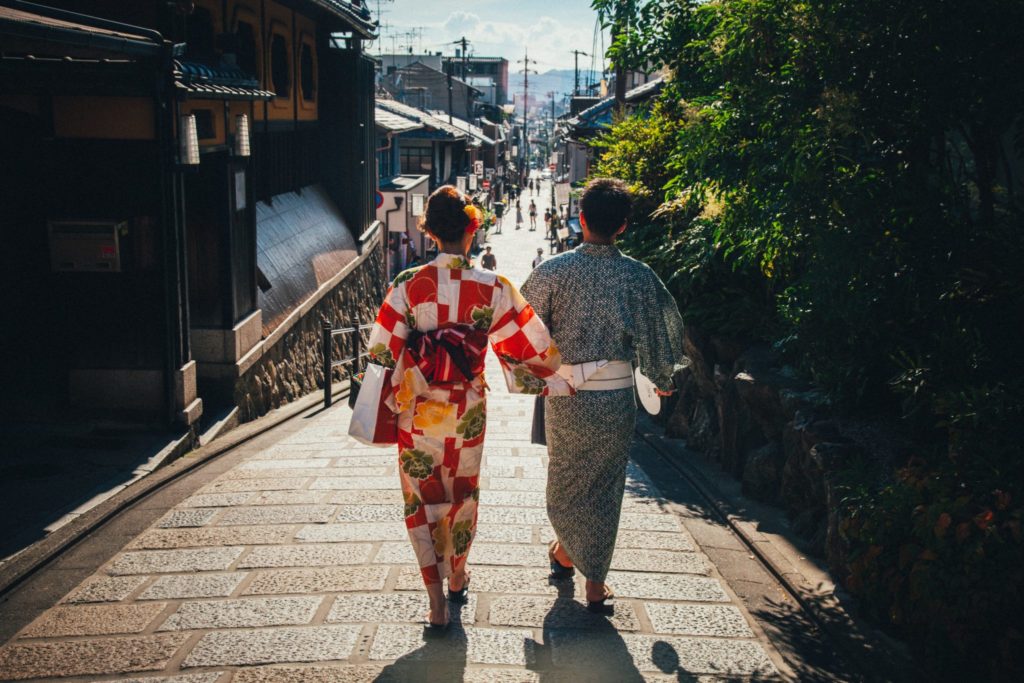Located in the northern part of Saitama Prefecture, Kumagaya is among the region’s most important commercial and business centres. It is situated between two rivers, the Arakawa River and the Tone River, and offers excellent cherry blossom viewing spots in peak spring season. It is known for experiencing very hot summers, especially back in the mid-2000s, and used to hold the record for being the hottest Japanese city, when it recorded a scorching hot temperature of 40.9 degrees Celsius on August 16, 2007.
How To Get There
The main train station in Kumagaya is the Kumagaya Station, which allows commuting to and from other parts of the Kanto region easy and convenient. It serves four railway lines: the JR East Joetsu Shinkansen and JR Hokuriku Shinkansen Lines, JR East Takasaki Line, and Chichibu Railway Main Line.
From Tokyo Station, getting to Kumagaya Station takes about 40 minutes via the Shinkansen and an hour and 20 minutes via the JR East Takasaki Line.
There are also infrequent buses with direct connections between Tokyo’s Narita Airport and Kumagaya, and a one-way travel takes about two and a half hours.
Top Attractions
Menuma Shodenzan Kangiin Temple
Constructed in 1760, the Menuma Shodenzan Kangiin Temple is a Buddhist Temple that is considered to be one of the three greatest temples of Japan.
Its Main Hall is covered in colourful, elaborate carvings and sculptures, and its other buildings, specifically the Inner Hall, features some intricate wood carving styles that are popular during the mid-Edo era, and are similar to the ones found at the shrines and temples in Nikko.
One particular artwork that shows the influence of these Nikko-style carvings is the eagle rescuing a monkey over a waterfall. It is attributed to Nikko’s famed expert carver, Jingoro Hidari, whose most celebrated work is the Three Wise Monkeys at the Tosho-gu Shrine in Nikko.
After exploring the temple grounds, you can enjoy traditional Japanese food at one of the many eateries in the area. The most recommended dish is the temple’s signature food — a dish comprised of deep fried tofu stuffed with rice and pickled veggies, known as Shoden Inari Sushi.
The Menuma Shodenzan Kangiin Temple grounds is open every day, from 10 am to 4:30 pm. Entrance to the grounds is free of charge. However, viewing the Inner Hall carvings costs 700 yen. More information is available here: Menuma Shodenzan Kangiin Temple’s official website.
From Kumagaya Station, the temple is about a half-an-hour bus ride away. Look for bus stop number 6, which is located outside the station’s north exit, get on an Asahi Bus Co. bus bound for Nishi-Koizumi, Ohta, or Menuma Shoden-mae, and get off at the Shodenzan-mae stop. The ride costs 460 yen, and IC cards, like PASMO and Suica, are accepted.
Arakawa River
Every second Saturday of August, Kumagaya holds a big fireworks show on the Arakawa River banks. Several local companies, businesses, and even regular citizens take part in the fireworks display, which transforms the night sky into a bright and colourful spectacle. People don their favourite yukata and enjoy the exciting and vibrant atmosphere with friends and family while enjoying tasty Japanese snacks from the stalls and shops around.

Tone River
The second longest river in Japan (after Shinano River), Tone River is a 322-kilometre long river that is dubbed as one of Japan’s “Three Greatest Rivers,” along with Chikugo River in Kyushu and Yoshino River in Shikoku.
During the Edo Period, Tone River became a key part in the transport of local goods, such as soy sauce, to and from different parts of Kanto, Tohoku, and other regions. But, with the introduction of the railway system in the 19th century, the river and its ports became less frequently used. Nowadays, the river is made up of numerous dams that store and provide water for various large industrial zones, businesses, and homes in the Tokyo area.
Tone River is quite scenic, with the majestic Gunma mountains standing from afar, and cycling and strolling along the banks is a popular way to explore the surroundings. It is a 20-minute leisurely walk from Menuma Shodenzan Kangiin Temple.
Kumagaya Uchiwa Matsuri
Held every third week of July for three days, from July 20 to July 22, the Kumagaya Uchiwa Matsuri is one of the biggest summer events in the Kanto region. It is a celebration of the Atago Yasaka Shrine that has been observed since 1750. It got its name from the round-shaped, traditional Japanese fans, known as uchiwa, which used to be made from leaves and animal hair but are now made from paper and bamboo. Uchiwa are believed to have the ability to purify and cure anyone who uses them.
On the first day of the festival, a parade of mikoshi, which is a small Shinto shrine or palanquin, carried by 100 young men starts from Yasaka Shrine to the downtown part of the city. The next day, there is a festival float parade with locals dressed in traditional clothing and accompanied by traditional Japanese drums and music. On the final day, a big ohayashi, or traditional Japanese musical performance, is done at around 6 pm at the main festival square, where all of the 12 participating festival floats are displayed. Once midnight strikes, the mikoshi is carried back by 300 people to Atago Yasaka Shrine.
Throughout the three-day celebration, uchiwa are handed out to festival goers, and there are many small shops and stalls pop on the event areas that sell local foods and products.
Atago Yasaka Shrine is a 15-minute walk away from Kumagaya Station.
Getting Around
Because most of Kumagaya’s attractions are located not too far from Kumagaya Station, getting from one to another can be done on foot. You also have the option to rent a bike to explore the farther spots.
Weather
Kumagaya is one of the most humid and hottest cities in Japan. In the summer, daily temperatures vary from the high 20s to the mid 30s (Celsius), and rainy days are quite often due to the monsoons. Autumn and spring are relatively pleasant, with daily temperatures around 15 degrees Celsius. And, in winter, the temperatures drop below 10 degrees, and can go as low as -2 degrees in January.
